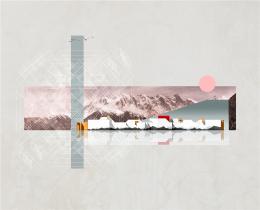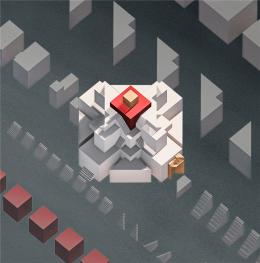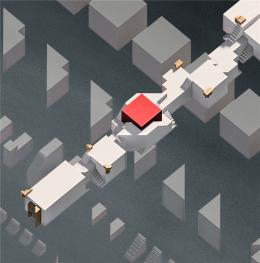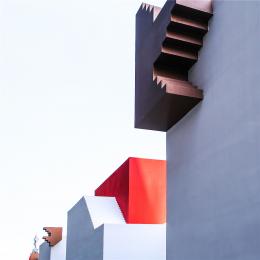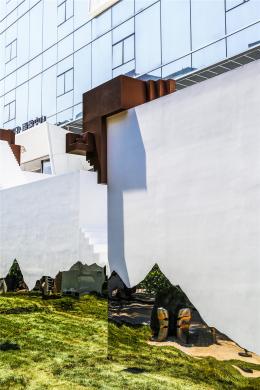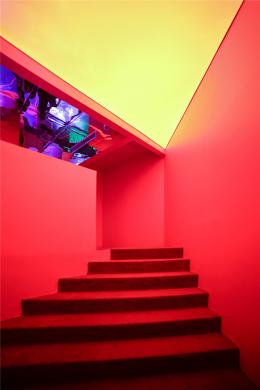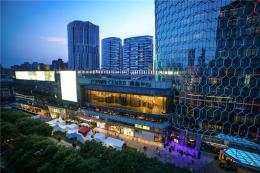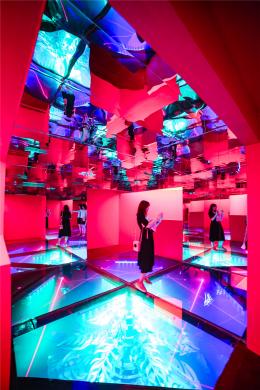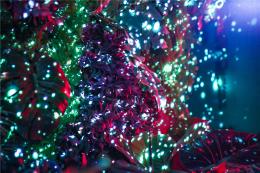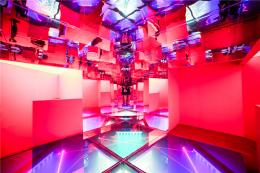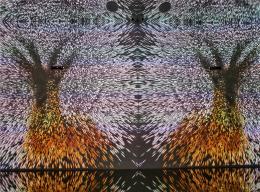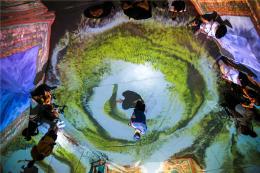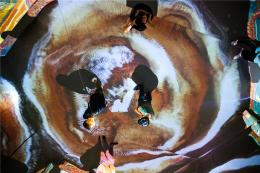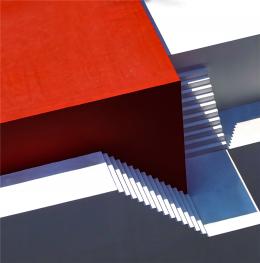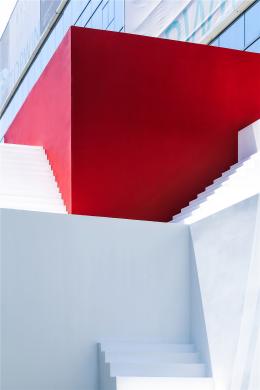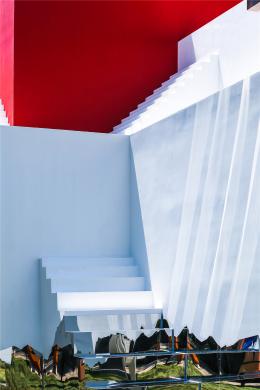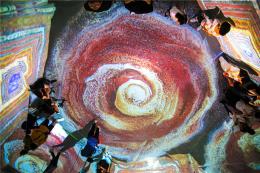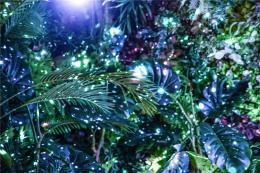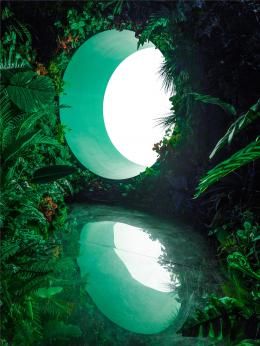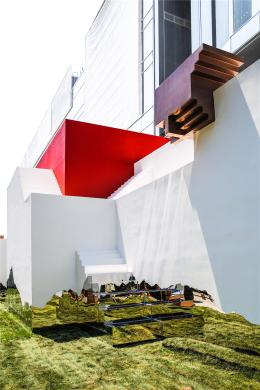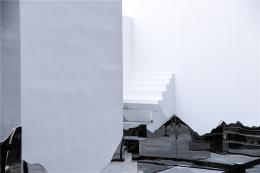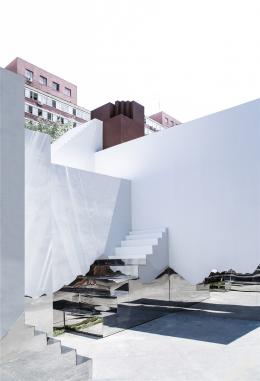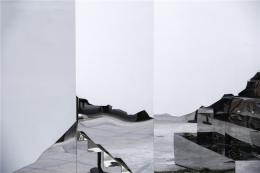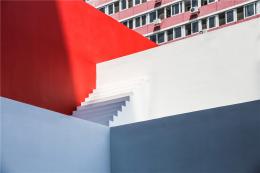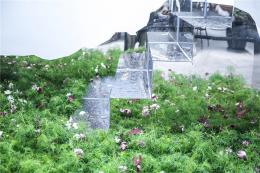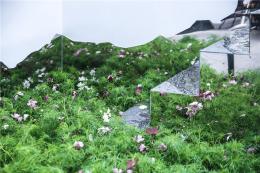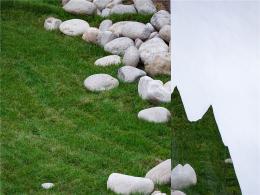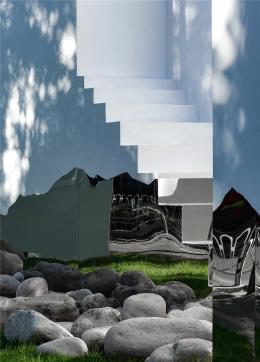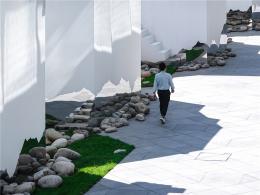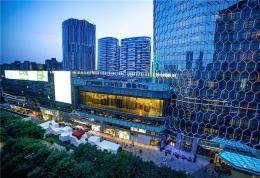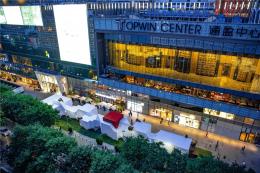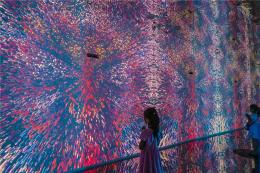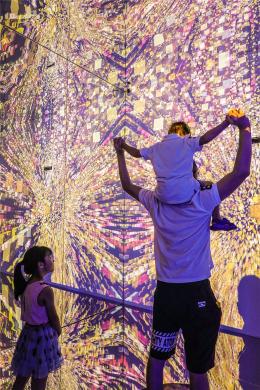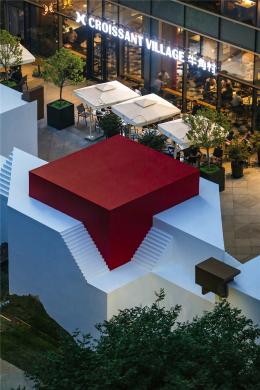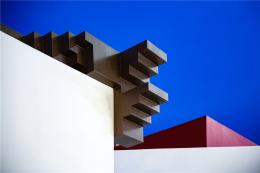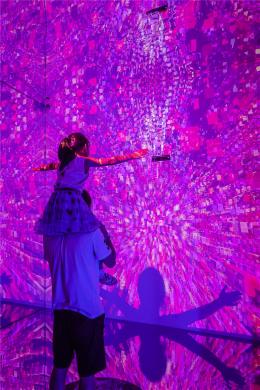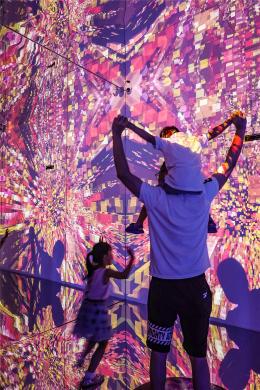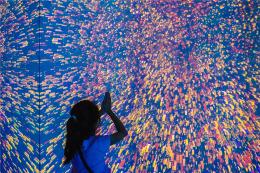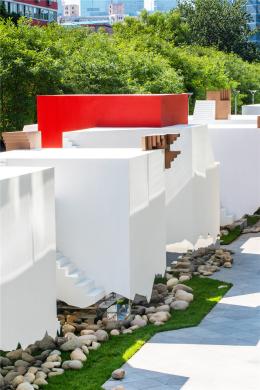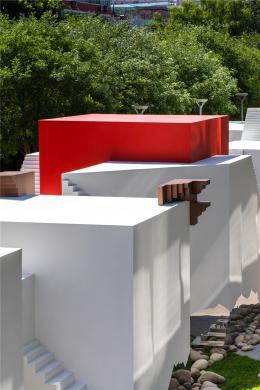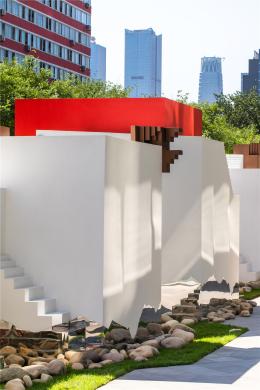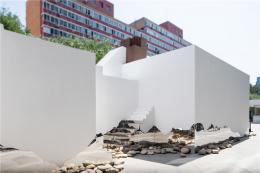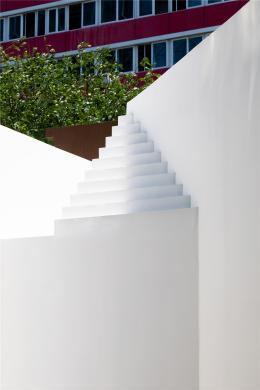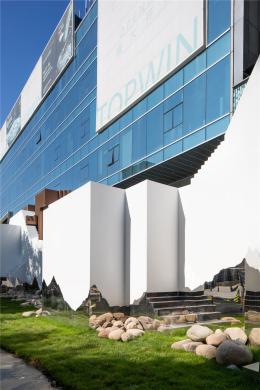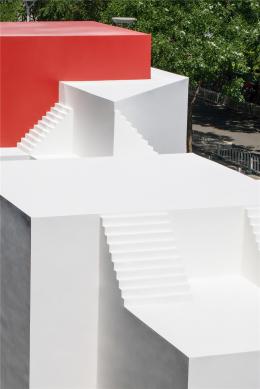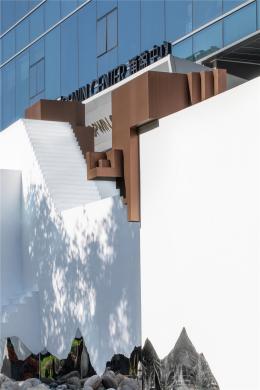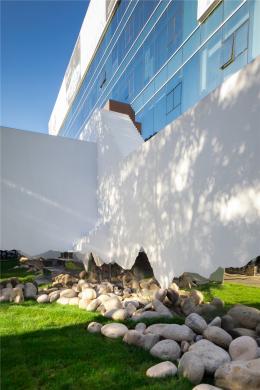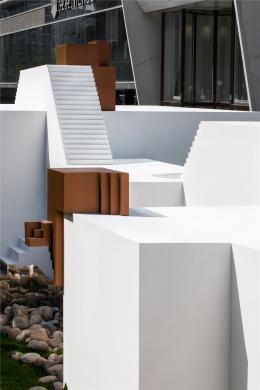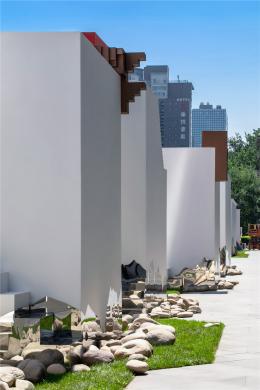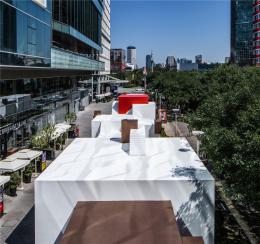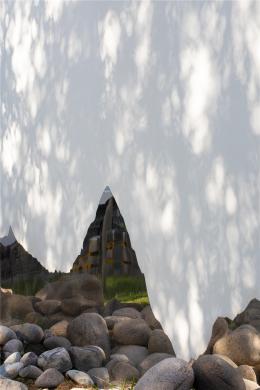曼陀羅之丘,一個(gè)內(nèi)向的花園���,懸浮于都市的理想城�����。這座數(shù)字藝術(shù)博物館����,坐落于北京最繁華的都市中心,卻形成了絕對(duì)內(nèi)向的空間關(guān)系�����。
Mandalas Pop-up Digital Art Museum is an inner garden, as well as a utopian city drifting in metropolises.This temporary building, though exhibited in the most bustling urban center of Beijing, provides a completely inward and isolated space.
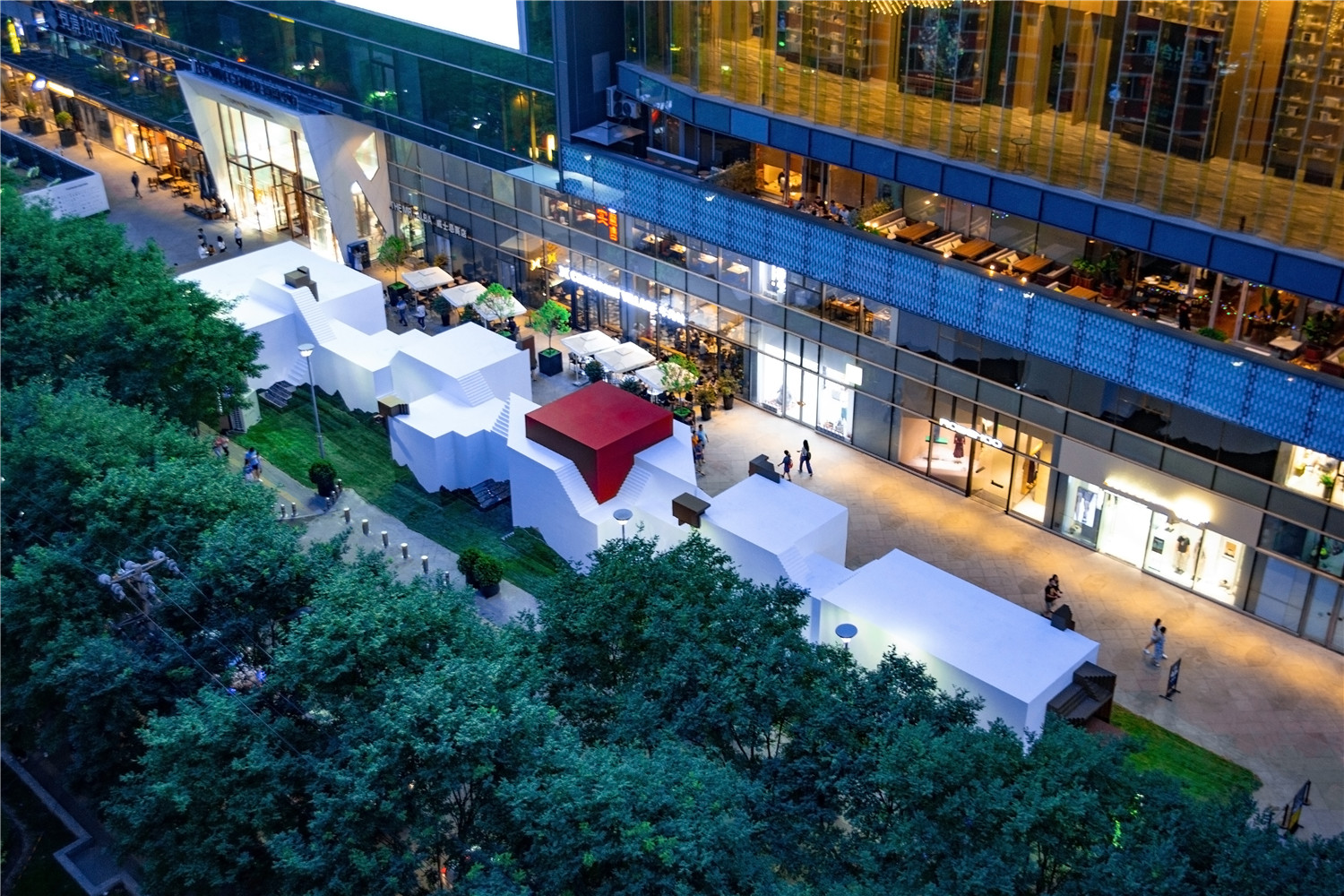
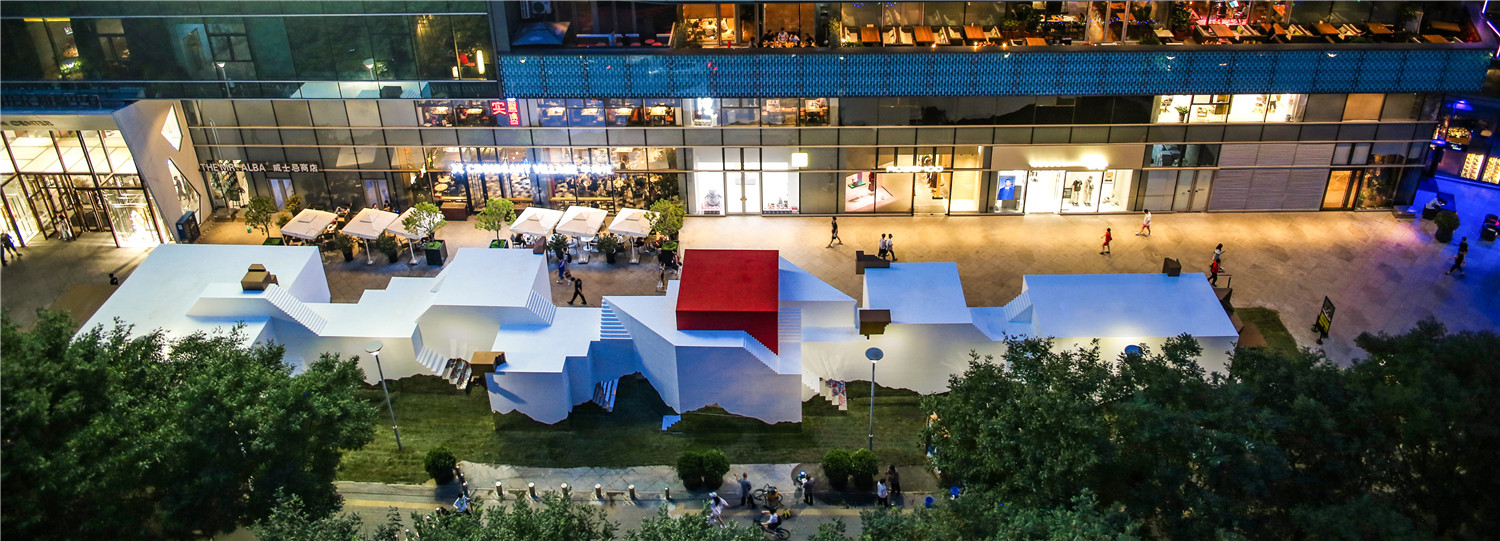
▲ 鳥(niǎo)瞰圖 ?Nan Xueqian
外部的空間�,也如同迷宮——錯(cuò)落的臺(tái)階帶來(lái)透視錯(cuò)覺(jué)的驚喜,激發(fā)身體行為與建筑的互動(dòng)關(guān)系�����;樸拙的石塊倒映在南伽巴瓦峰天際線中��,令它與成熟的都市氛圍割裂開(kāi)��,仿佛天外來(lái)物�。無(wú)數(shù)的未知,偶然和驚喜��,都圍繞在它的周?chē)?/p>
Its external layout is arranged like a labyrinth. The staggered steps surprise visitors with a perspective illusion, motivating their physical interaction with the building. Mingling with fa?ade lines that resemble the skylines of Namcha Barwa, the unadorned stones isolate the building from the full-blown metropolitan atmosphere, as if it were from outer space.It is a building that contains numerous uncertainties, fortuities, and surprises.
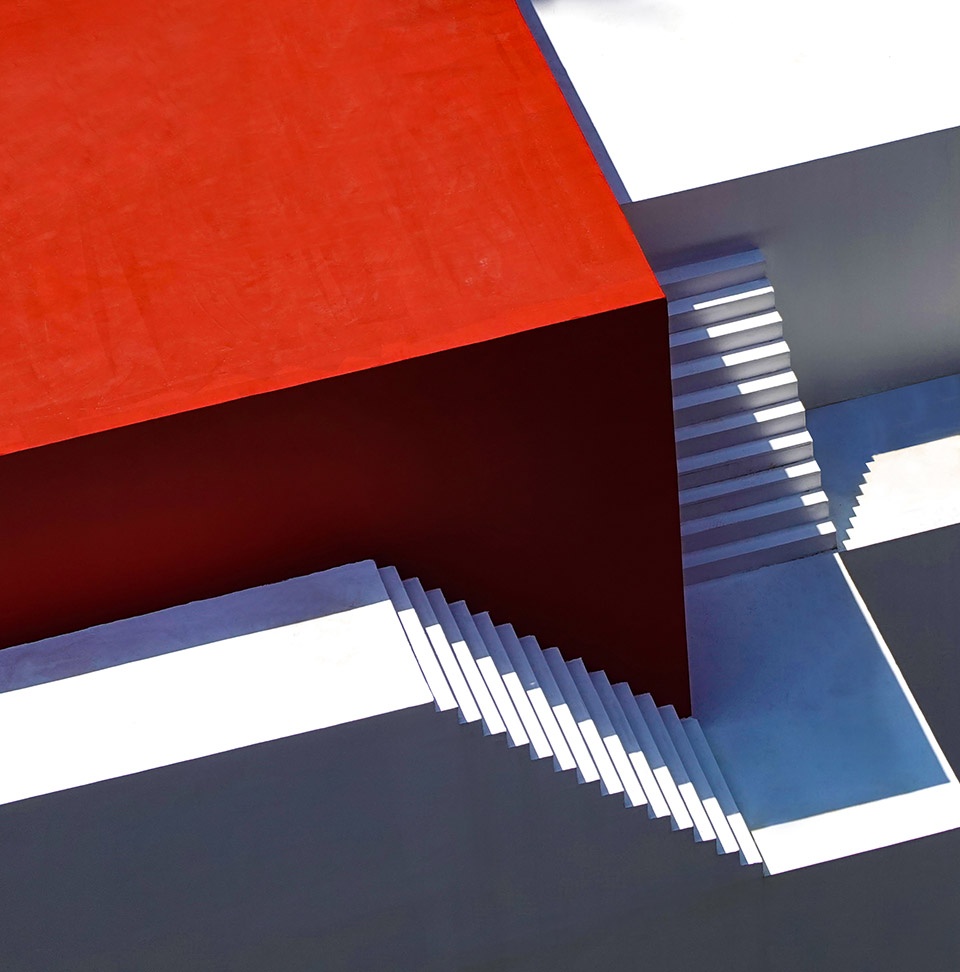
▲ 迷宮般的臺(tái)階 ?Nan Xueqian
沉浸式體驗(yàn) Immersing Art and Architecture
作為快閃式的主題展覽建筑,曼陀羅之丘與內(nèi)部喜馬拉雅為主題的數(shù)字藝術(shù)展覽形成了從概念到形式多層面的呼應(yīng)與對(duì)照——這也正是曼陀羅之丘與傳統(tǒng)展覽建筑的最重要的不同之處�,它只為一個(gè)固定的主題展覽服務(wù)���,從而帶給參觀者真正的沉浸式體驗(yàn)�,并創(chuàng)造人與人/人與空間的新關(guān)系�����。
在長(zhǎng)達(dá)五十余米但限高不足五米����,寬度不足九米的封閉建筑體量中,建筑師試圖窮盡變幻的體驗(yàn)��,游移意味著發(fā)現(xiàn)驚喜���,就像在園林中漫步���,每個(gè)人都在發(fā)現(xiàn)屬于自我的路徑。
As a temporary building for digital art exhibition, Mandalas Pop-up Digital Art Museum responds gracefully to the exhibition inside. It is designed for this specific theme – Himalaya culture & art, in order to bring immersing experience, create new relationships between people and space. It is the most important difference between Mandalas Pop-up Digital Art Museum and other traditional museums.
In a closed building with a length of more than fifty meters, a height of less than five meters, and a width of less than nine meters, the architect tries to provide various kinds of experience. While moving around the building, visitors encounter different surprises. It is just like walking in a garden, where each person discovers their own path.

面向商鋪與街道的兩側(cè)�����,建筑師試圖采取不同的動(dòng)作:一方面盡量讓出足夠的空間����,使得商鋪經(jīng)營(yíng)不受影響����;一方面在局促的場(chǎng)地中依靠非常小的建筑動(dòng)作爭(zhēng)取豐富的空間表情��。五個(gè)主要體量對(duì)兩側(cè)城市空間有選擇地?cái)D壓或后退�,若即若離。
On the two sides facing the shops and the street, the architect made different efforts. For one thing, he ensured enough space for the shops to open as usual. For another, he strived for rich space expressions in a cramped place through very small actions. In terms of the five architectural dimensions, the building either squeezes or retreats from the urban space on its two sides, keeping itself apart but not afar.
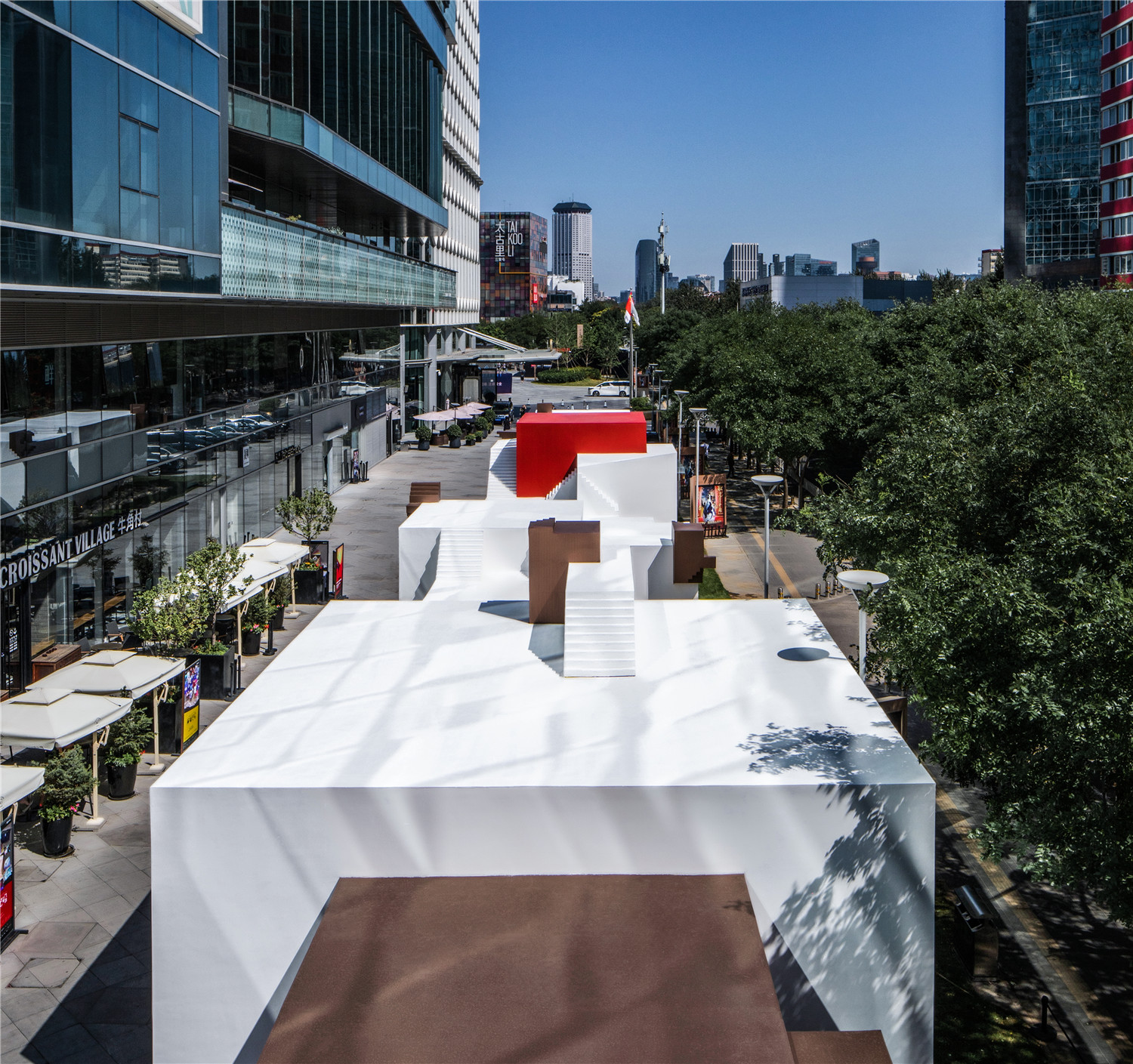
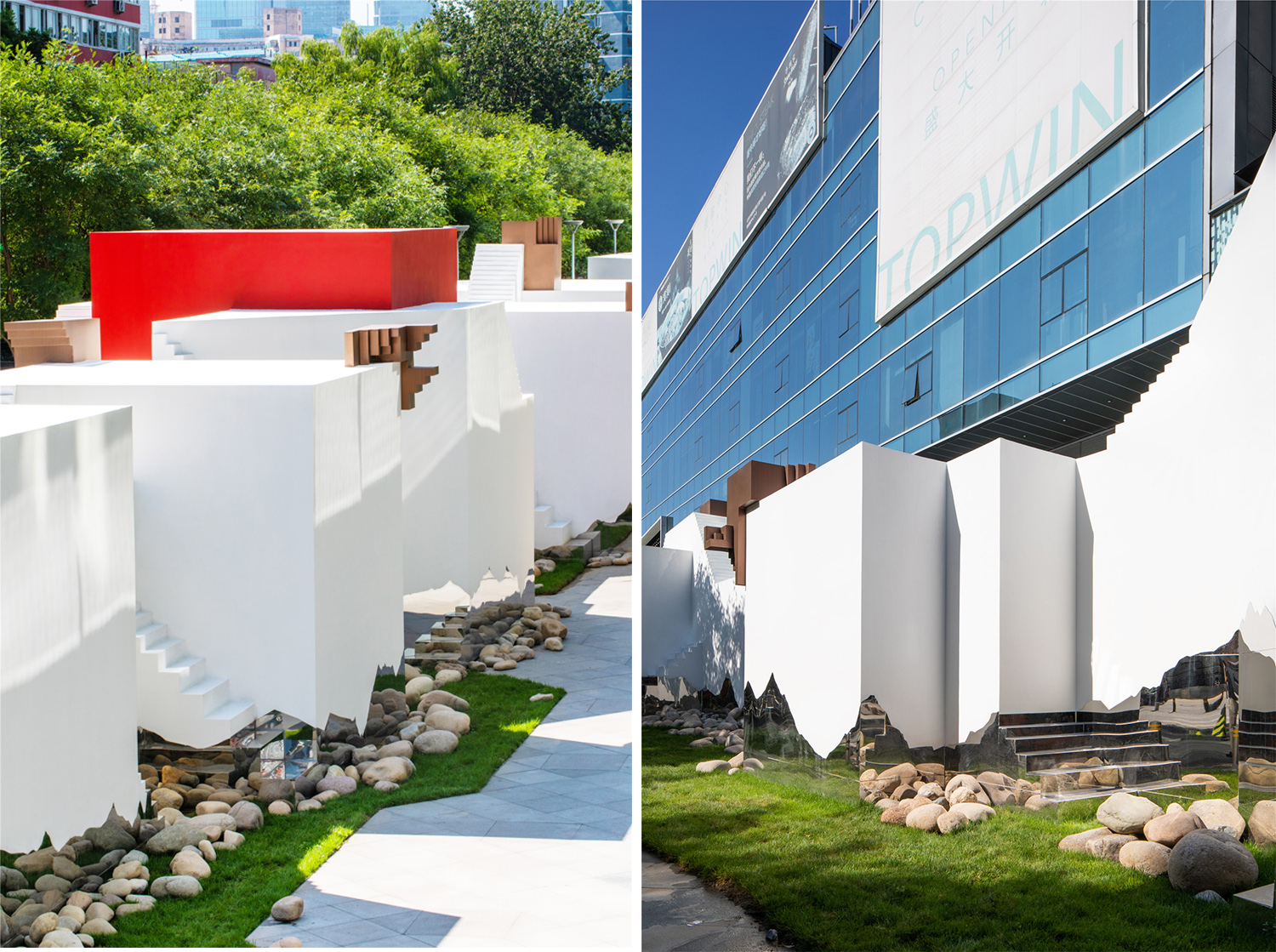
為了回應(yīng)內(nèi)部數(shù)字藝術(shù)展覽對(duì)光線的嚴(yán)格控制�,建筑師完全取消了對(duì)外的開(kāi)窗,并在出入口設(shè)計(jì)了雙重嵌套空間���,令人們無(wú)從窺視它內(nèi)心的秘境�。在完全黑暗的內(nèi)部空間���,變幻的光影成為觀者唯一可以依賴(lài)的事物���。
無(wú)開(kāi)窗的立面令建筑的尺度似乎無(wú)從捉摸——人們?cè)诿鎸?duì)它的時(shí)候,缺失了衡量層數(shù)��、高度的重要標(biāo)尺�����,這提示曼陀羅之丘可以成為介于雕塑與建筑之間的狀態(tài),也引發(fā)了建筑師進(jìn)一步探索的興趣�����。
As internal multi-media art exhibitions have strict controls on illumination, the architect completely removed outward windows and designed a double-nested space at the entrance, making it impossible for people to see the building’s inner secrets from outside. In the total darkness of its interior space, visitors rely only on the changing lights and shades.
Without windows on the fa?ade, the scale of the building seems to be difficult to judge. When facing it, visitors lack an important yardstick to measure its heights and number of stories. This indicates that the Mandalas Pop-up Digital Art Museum can exist in a form between that of a sculpture and a building, which has also given the architect motivation for further exploration.
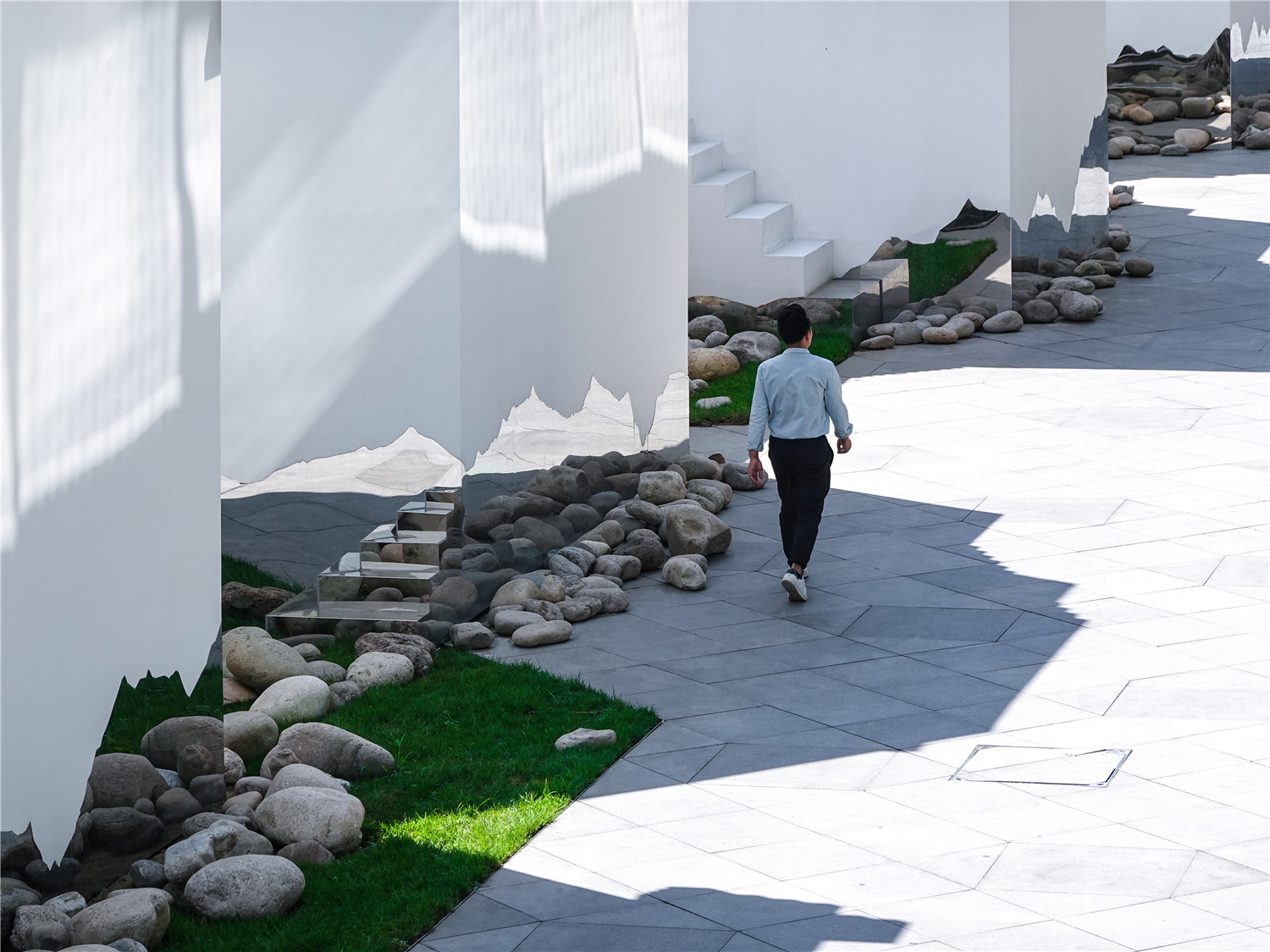
▲ 無(wú)開(kāi)窗的立面 ? Nan Xueqian
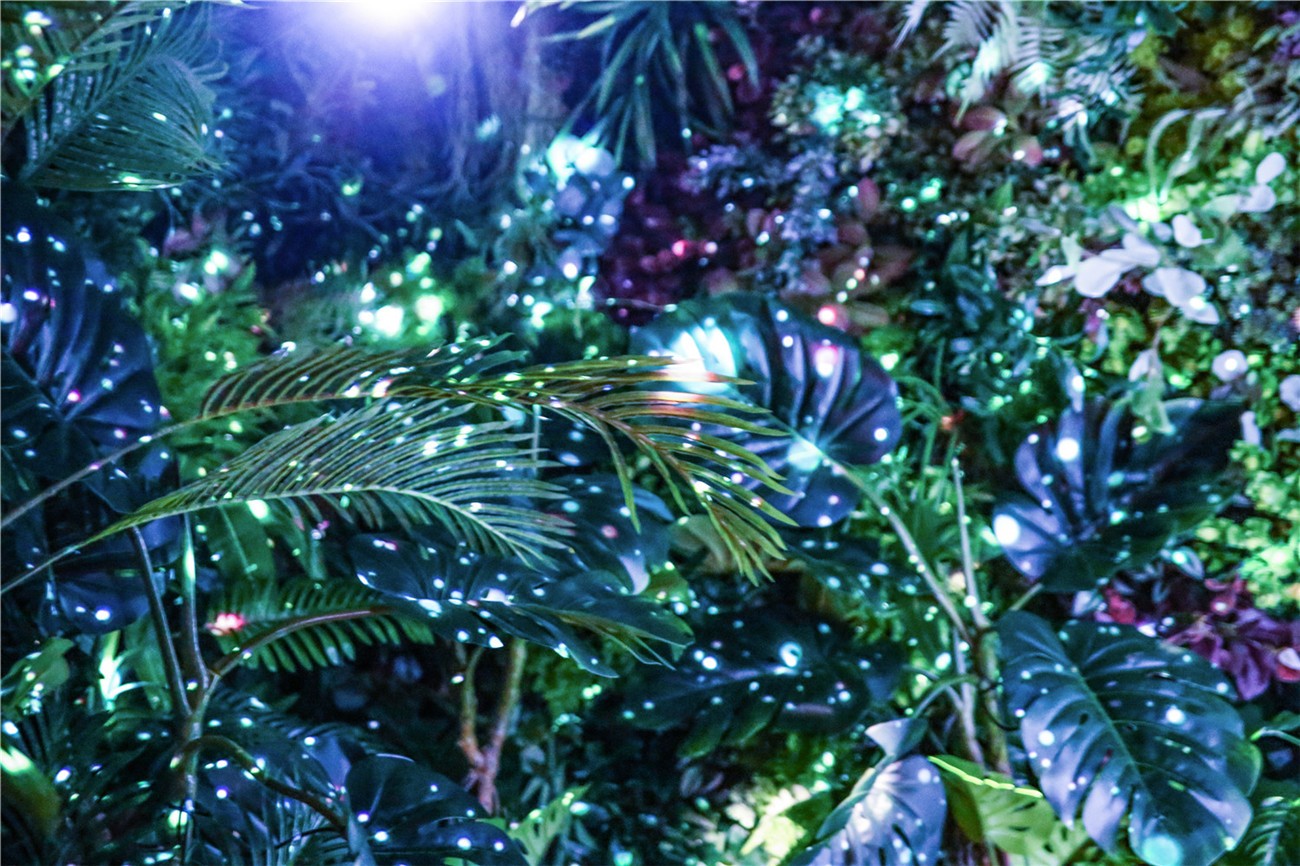

▲ 室內(nèi)植物與燈效 ?Nan Xueqian
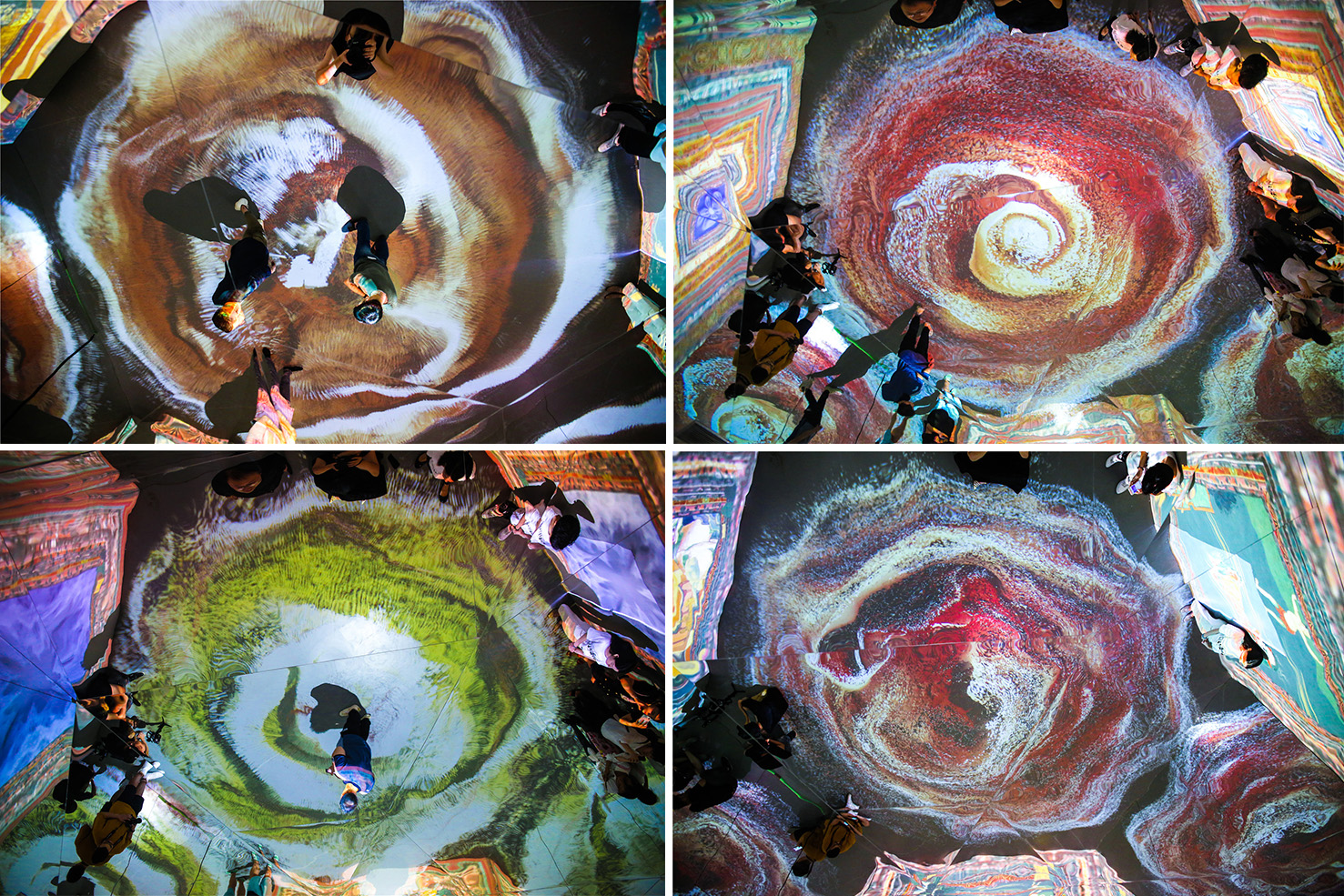
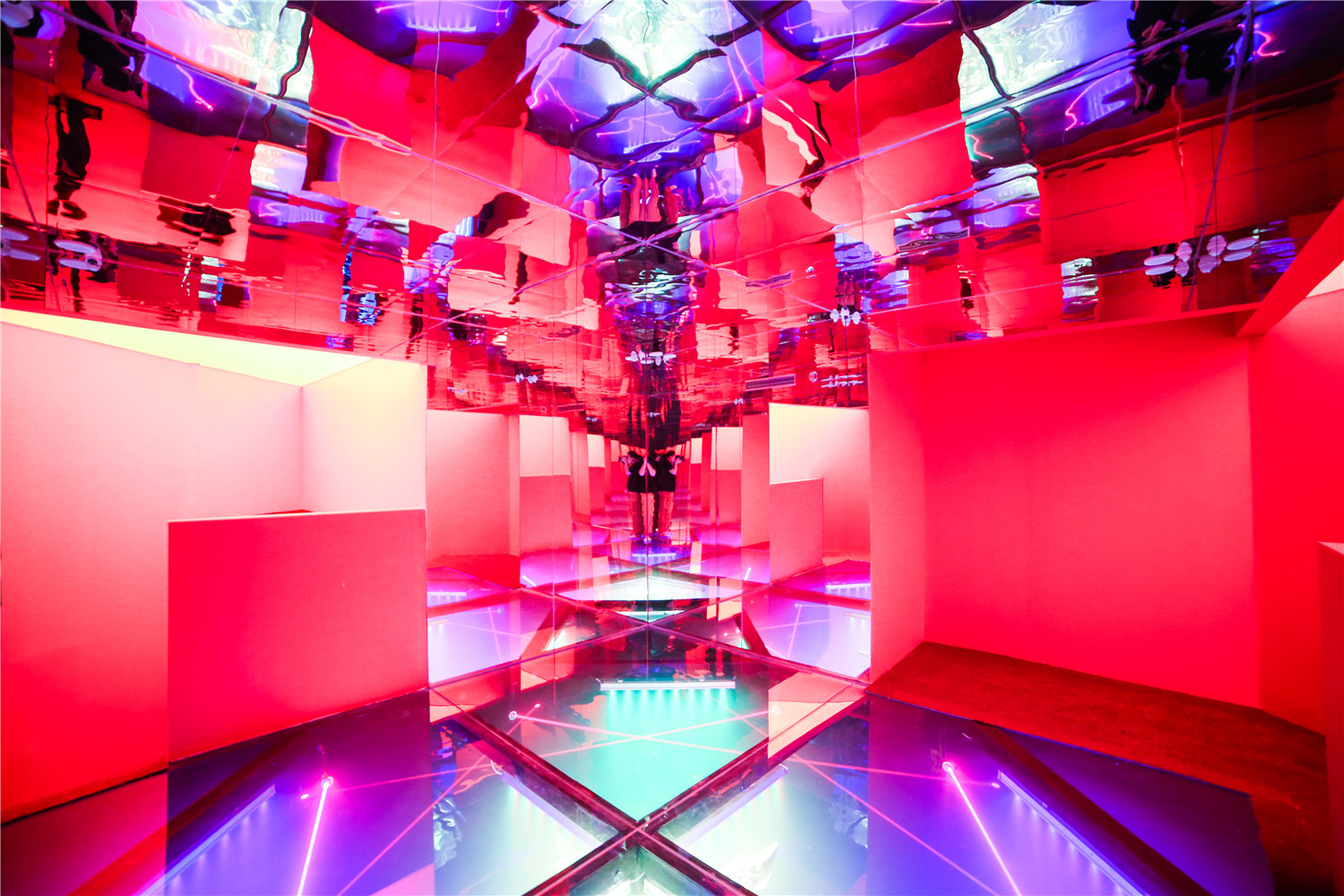
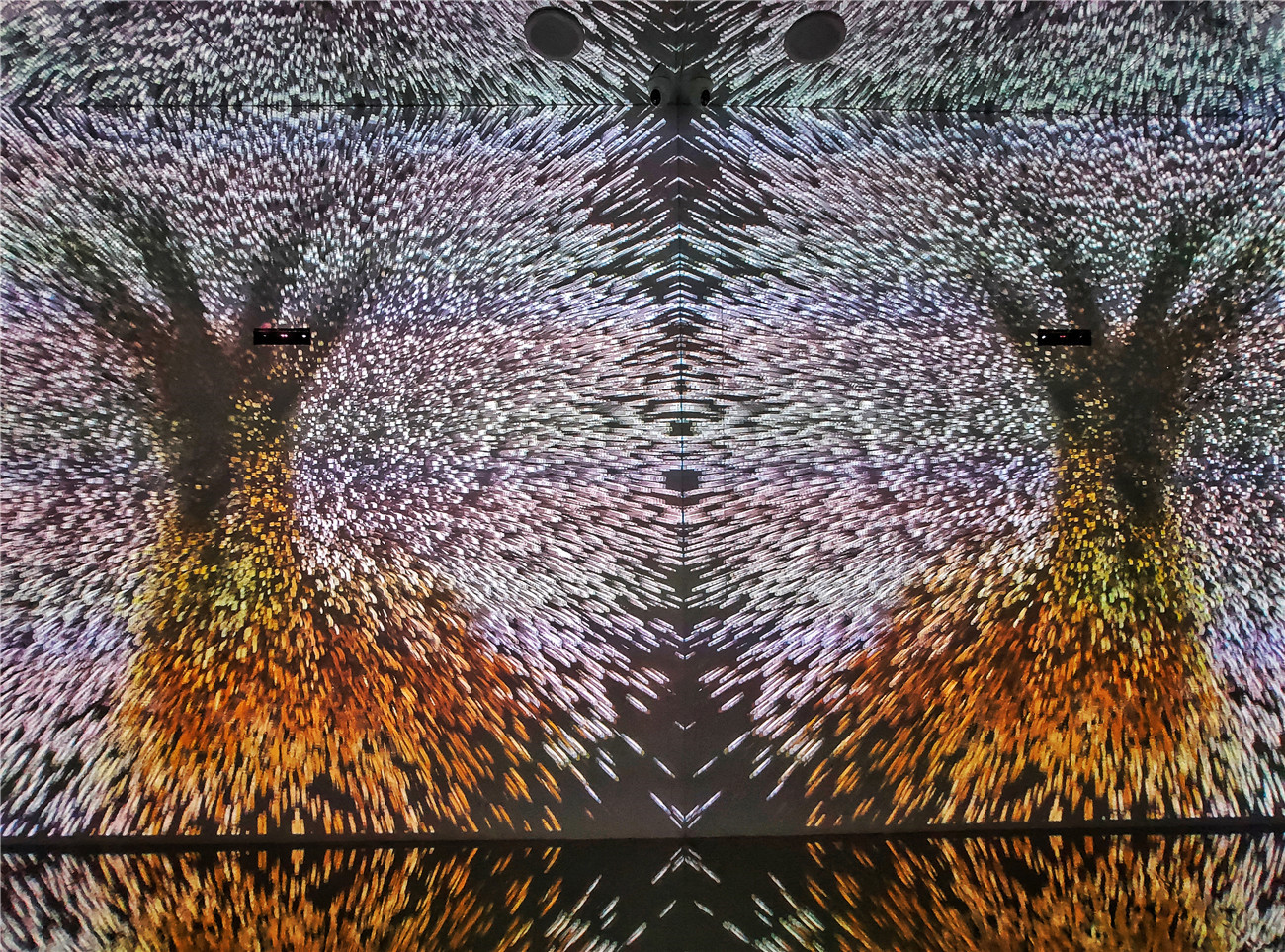
▲ 空間內(nèi)部燈光效果 ? Nan Xueqian
曼陀羅積木
Mandala Blocks
組成曼陀羅之丘體量的全部體塊�,可被拆分重組為一座“壇城”——這正呼應(yīng)了對(duì)壇城沙畫(huà)的一種解讀:當(dāng)沙畫(huà)完成的一刻����,時(shí)空中的“壇城”也真正建立起來(lái)。
如同一套可以隨意重組的積木�,曼陀羅之丘的六個(gè)金色角部體塊可以類(lèi)似榫卯的方式,嵌套組合為與一個(gè)完整的方體��。
All the blocks that make up the Mandalas Pop-up Digital Art Museum can be split and reorganized into a “dKyil-‘khor” (an inner palace or Buddha realm in Chinese Buddhism, translated as “mandala” in English). This echoes an interpretation of the Mandala Sandpainting: when a sand mandala is completed, a “dKyil-‘khor” is also established in space and time. Like a set of blocks that can be reorganized in many ways, the building’s six golden corner blocks can be nested into a complete cube with structures similar to mortise and tenon joints.
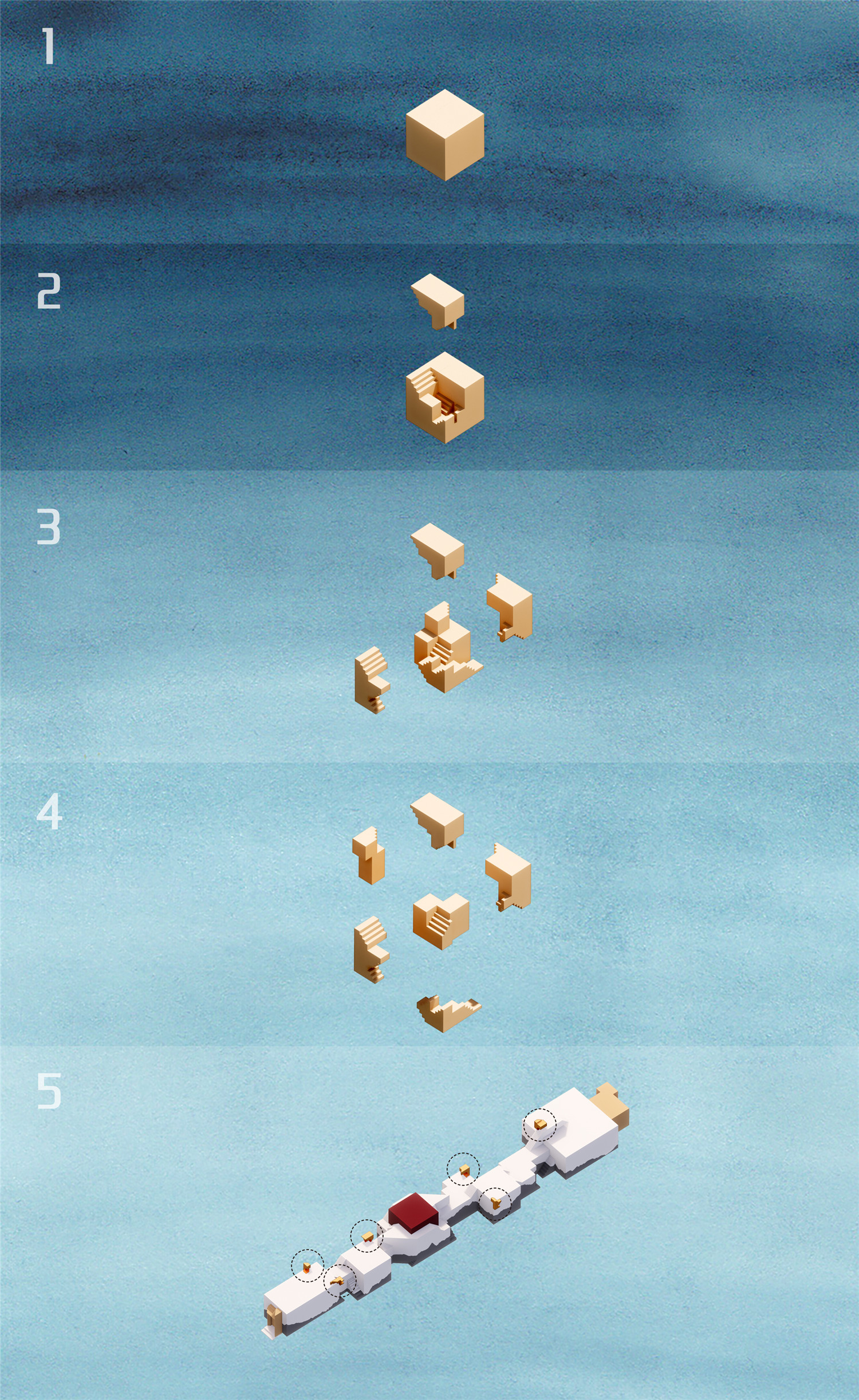
▲ 生成過(guò)程 ?One Take Architects
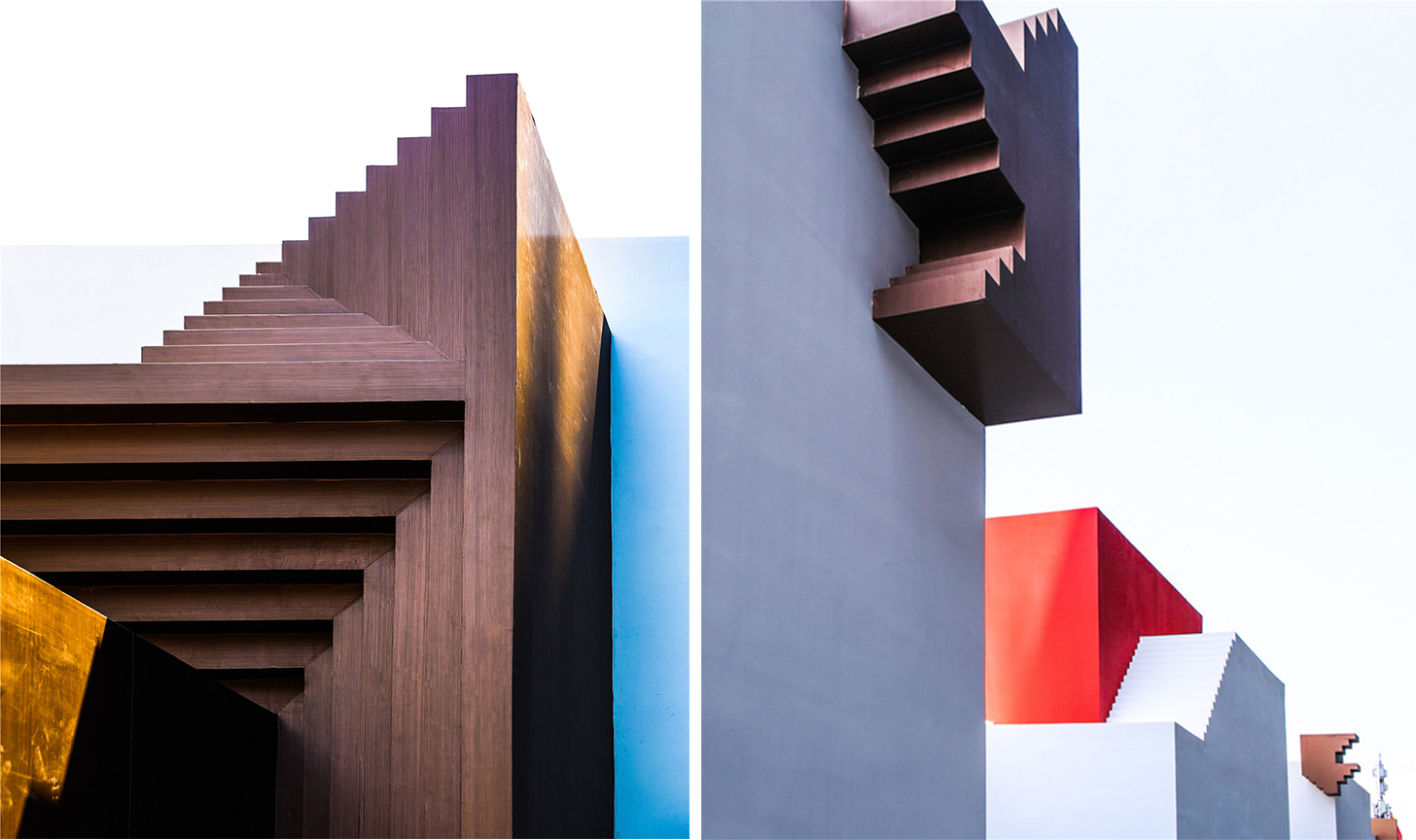
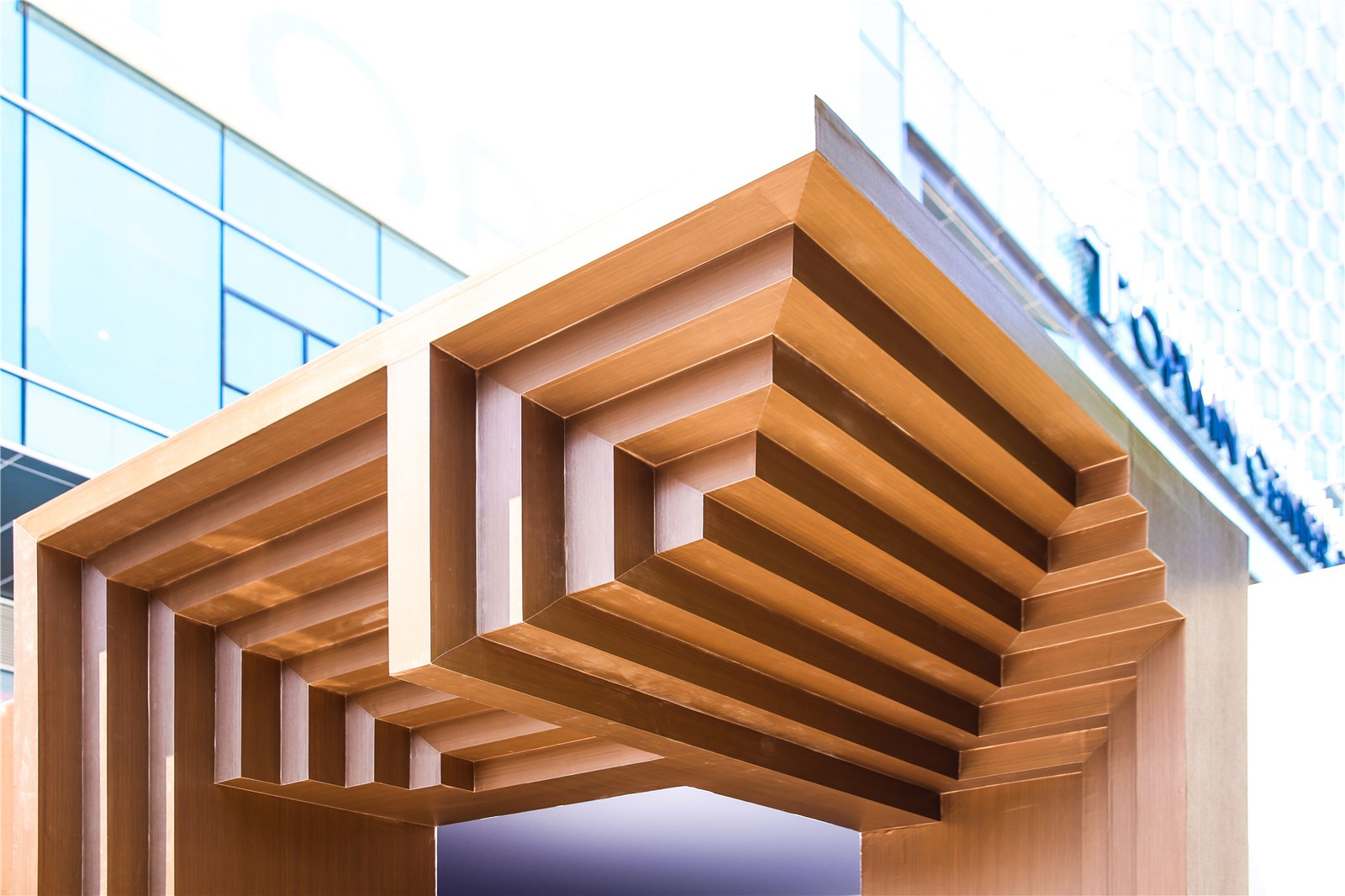
▲ 體塊細(xì)節(jié) ?One Take Architects
建筑外側(cè)的若干踏步���,高度被刻意調(diào)整���,可倚可坐可攀,失去作為衡量建筑尺度的功能��,這令它有了更多詼諧的趣味��,與嚴(yán)肅沉悶的城市空間的形成鮮明對(duì)比。
All the blocks that make up the Mandalas Pop-up Digital Art Museum can be split and reorganized into a “dKyil-‘khor” (an inner palace or Buddha realm in Chinese Buddhism, translated as “mandala” in English). This echoes an interpretation of the Mandala Sandpainting: when a sand mandala is completed, a “dKyil-‘khor” is also established in space and time.
Like a set of blocks that can be reorganized in many ways, the building’s six golden corner blocks can be nested into a complete cube with structures similar to mortise and tenon joints.
Some steps on the external layout are deliberately adjusted to different heights for people to lean back, sit, or climb. Though they cease to provide a reference point of the building’s scale, they make it more interesting and create a sharp contrast to the serious and dull urban space.
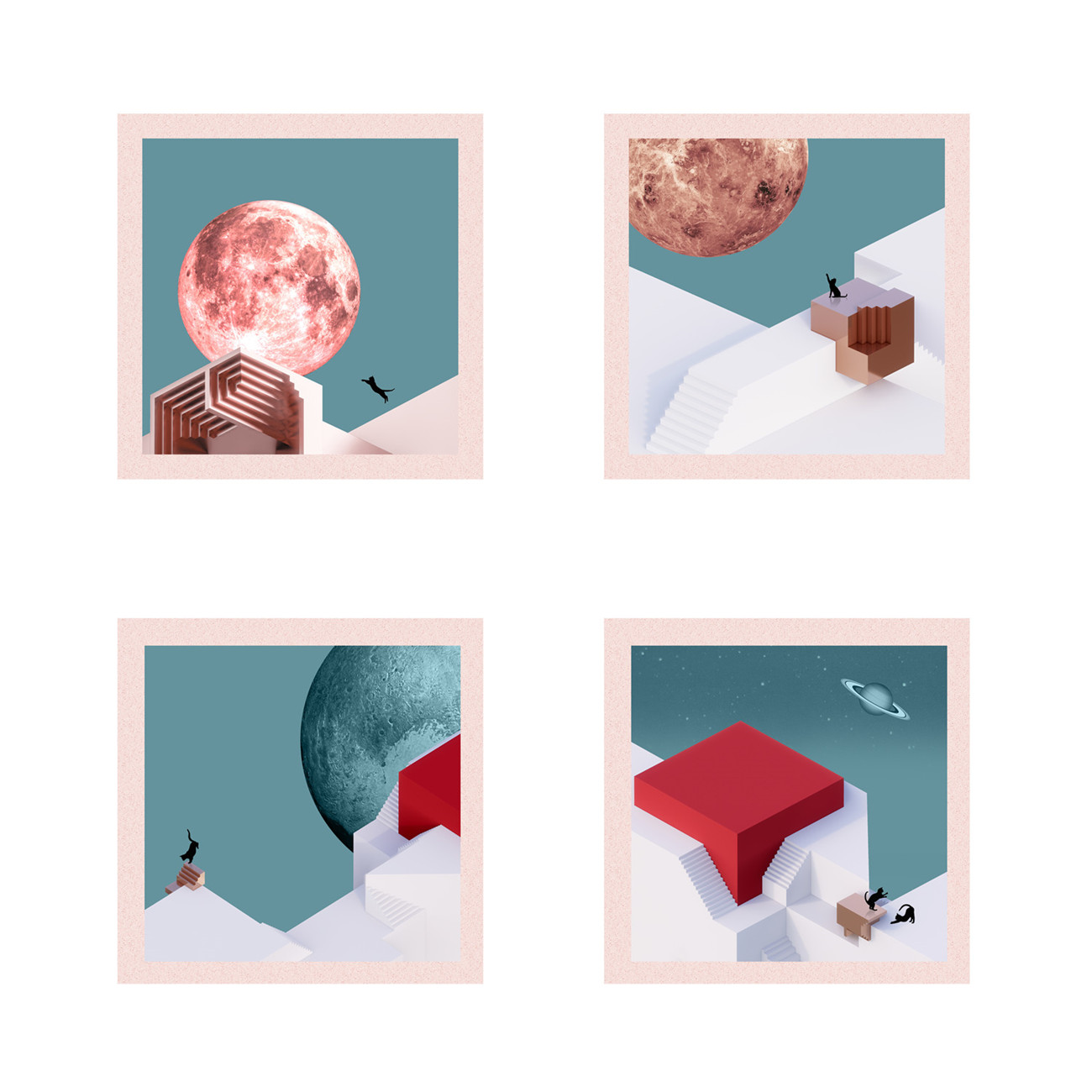
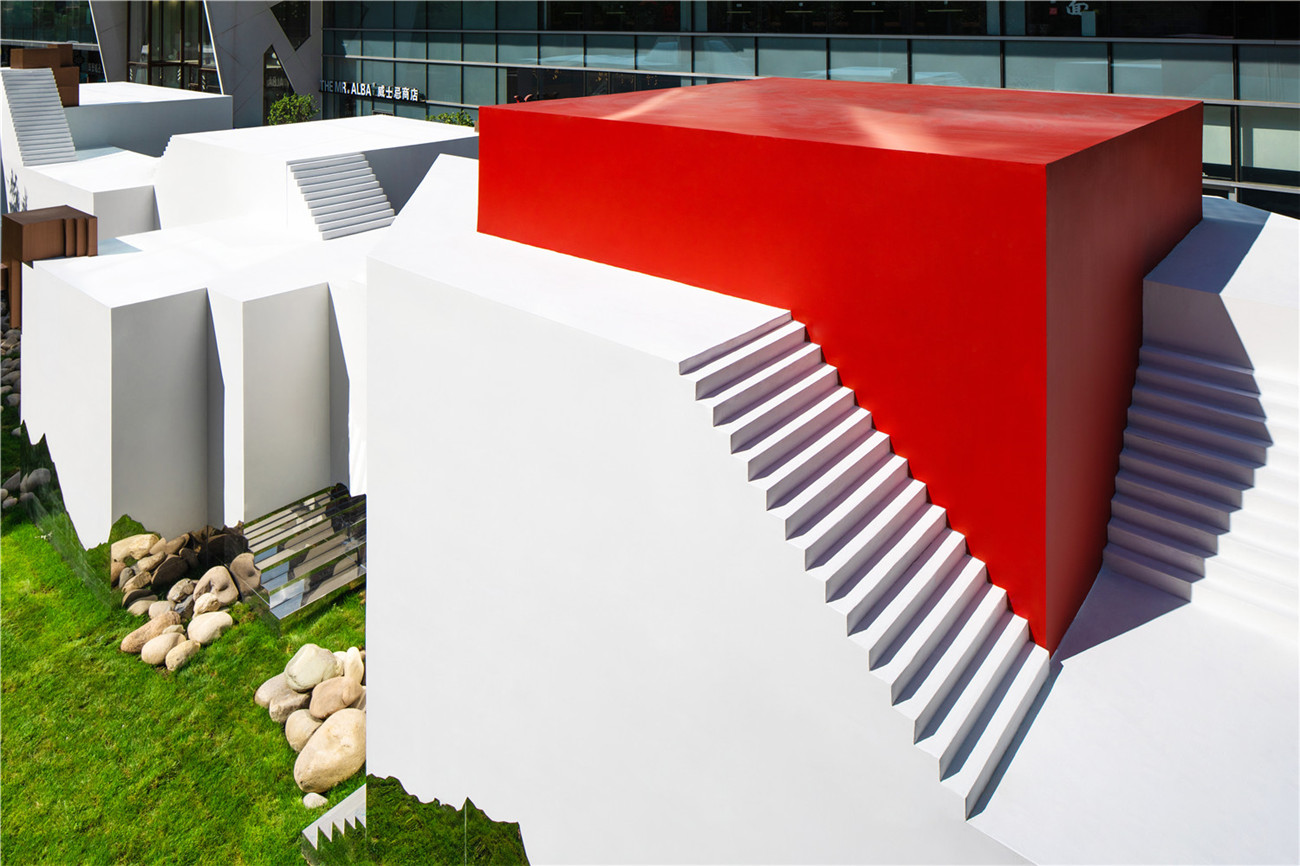
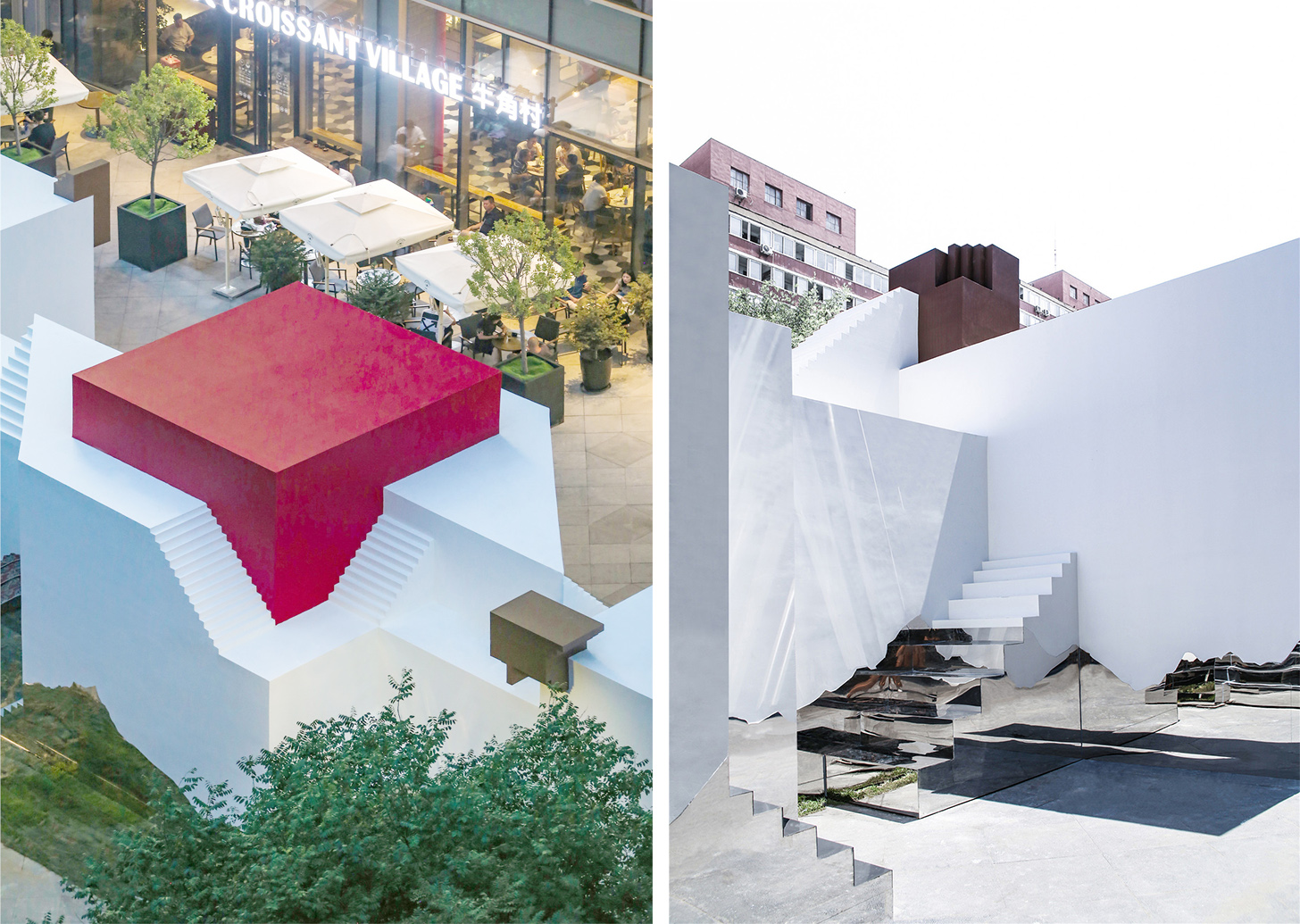
▲ 建筑外側(cè)整設(shè)有若干踏步 ?Nan Xueqian
圖像化立面
Graphical Fa?ade
與強(qiáng)調(diào)“堅(jiān)固”的建筑感相對(duì)��,建筑師試圖在表面材料賦予更多圖像化的特征�。曼陀羅之丘立面蜿蜒曲折的線條,正是取自南伽巴瓦峰的天際線��。長(zhǎng)矛直刺藍(lán)天��,雪電如火燃燒���,這是對(duì)南伽巴瓦峰至為精準(zhǔn)的形容���。它位于喜馬拉雅神秘地結(jié)終年深藏云間,卻和我們賴(lài)以生存的這個(gè)世界骨肉相連�,休戚與共。落入繁華都市中心的南伽巴瓦峰��,映射喧鬧的人間景象�����,也為曼陀羅之丘帶來(lái)了銀色的神秘光芒�,成為質(zhì)樸中最浪漫的筆觸。
In contrast to the emphasis on a building’s solidness, the architect tries to give more graphical features to the building’s surface materials. The winding lines on its fa?ade are in fact taken from the skylines of Namcha Barwa.According to the most accurate description of Namcha Barwa, the mountain pierces into the blue sky like long spears, with thick white snow and dark rocks that overwhelm human eyes. Located in the deep end of the mysterious Himalayas, it hides among the clouds all year around, but is still connected with the world we are living in, sharing the same destiny.Through the Mandalas Pop-up Digital Art Museum, Namcha Barwa falls into the bustling urban center, reflecting the noisy and earthly scenes of the human world. It also brings mysterious silver sparkles to the Mandalas Pop-up Digital Art Museum, becoming the most romantic feature on this sparsely adorned building.
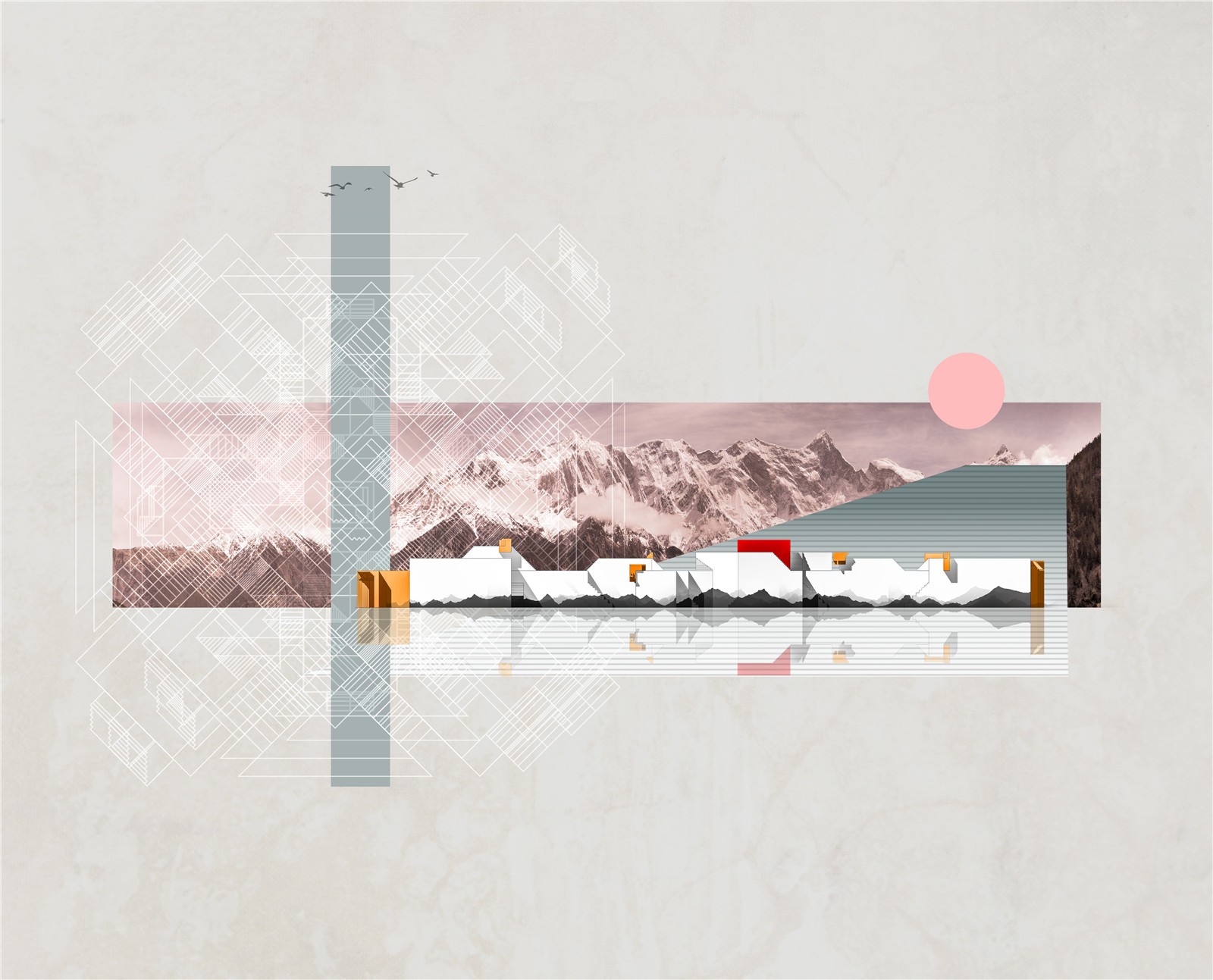
▲ 博物館立面意向圖 ?One Take Architects
飛來(lái)石與格?���;?nbsp;
Flying Stones and Galsang Flowers
裸露粗糲的山石與來(lái)自高原的格?����;?���,在鏡面金屬的反射下一直綿延入建筑的深處�,承托起這座懸浮于都市中的曼陀羅之丘��,散落的石塊重新回到應(yīng)屬之地����。疏離于城市的山石與格桑花并非是建筑師賦予曼陀羅之丘的意象���,卻是聯(lián)通都市現(xiàn)實(shí)與超現(xiàn)實(shí)喜馬拉雅秘境的一條道路���,令曼陀羅之丘帶著觀者在現(xiàn)實(shí)世界與另一個(gè)魅力無(wú)邊的無(wú)意識(shí)和幻象的世界之間自由出入。
With reflections on mirror metals, exposed rough mountain stones and Galsang flowers from the Qinghai-Tibet Plateau stretch far into the building. As the foundation for the drifting Mandalas Pop-up Digital Art Museum, the scattered stones return to where they belong. However, the architect does not use mountain stones and Galsang flowers to create imagery that causes alienation from cities. Instead, these stones and flowers form a path that links urban reality with Himalayan mystery, by which the Mandalas Pop-up Digital Art Museum allows visitors to move freely between the real world and the alluring unconscious world of fantasies.

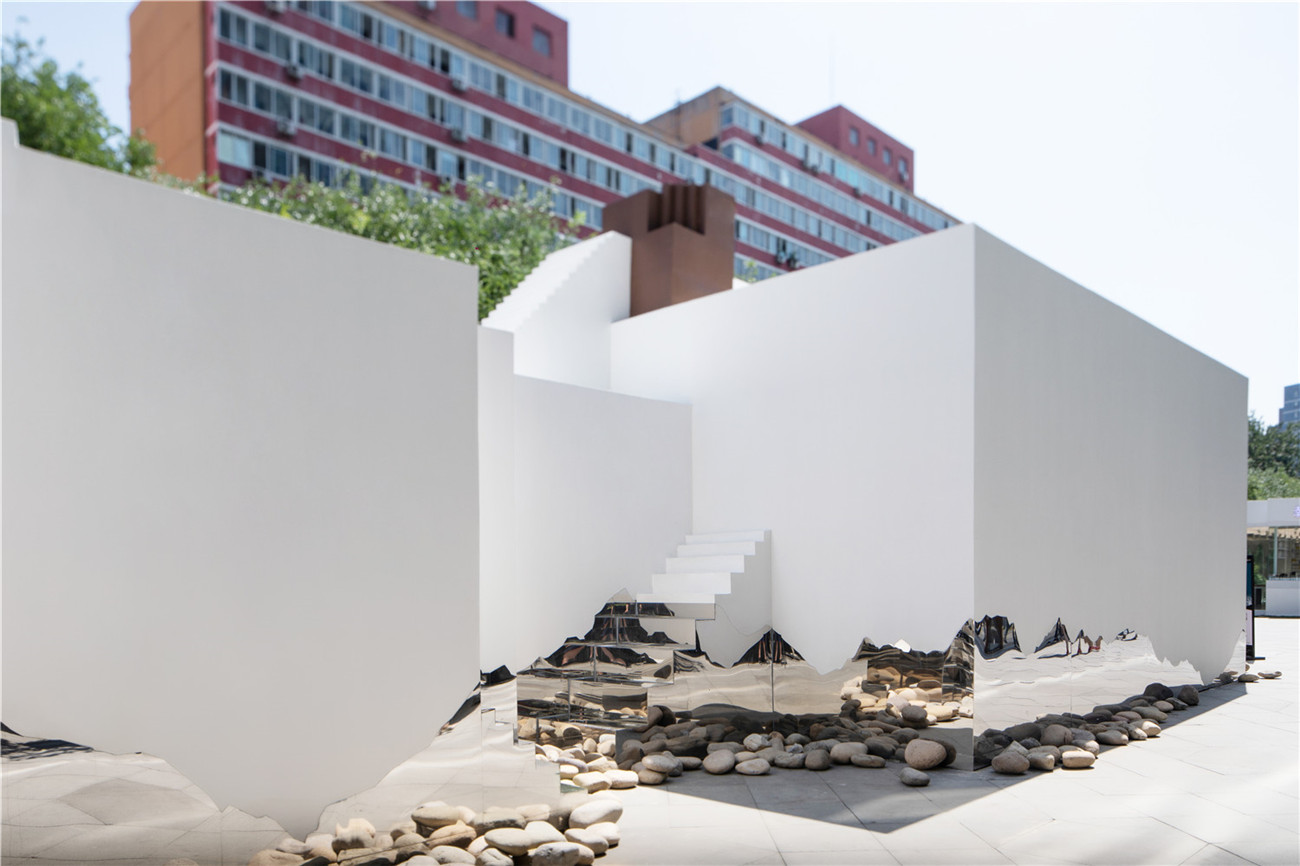
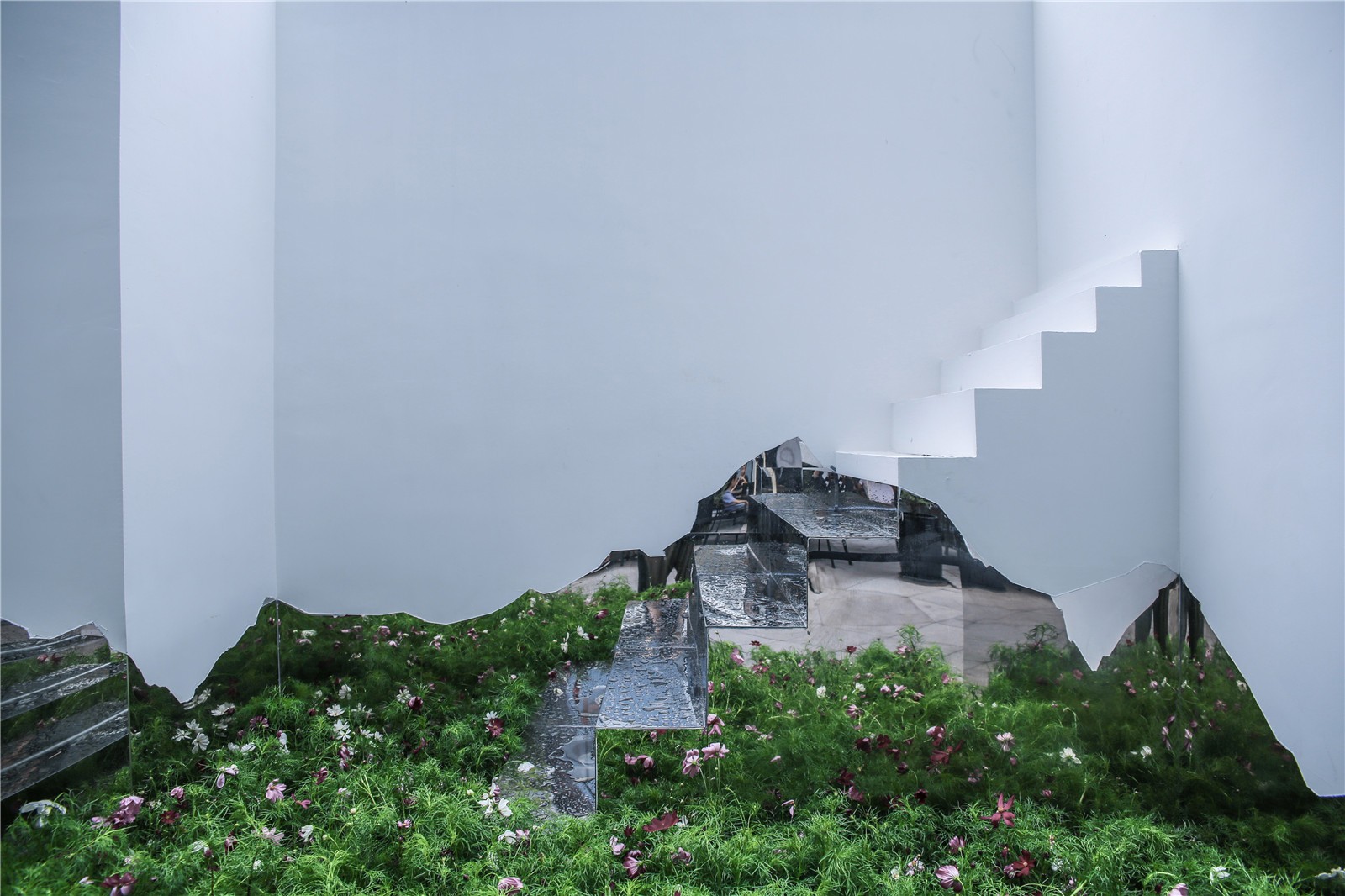
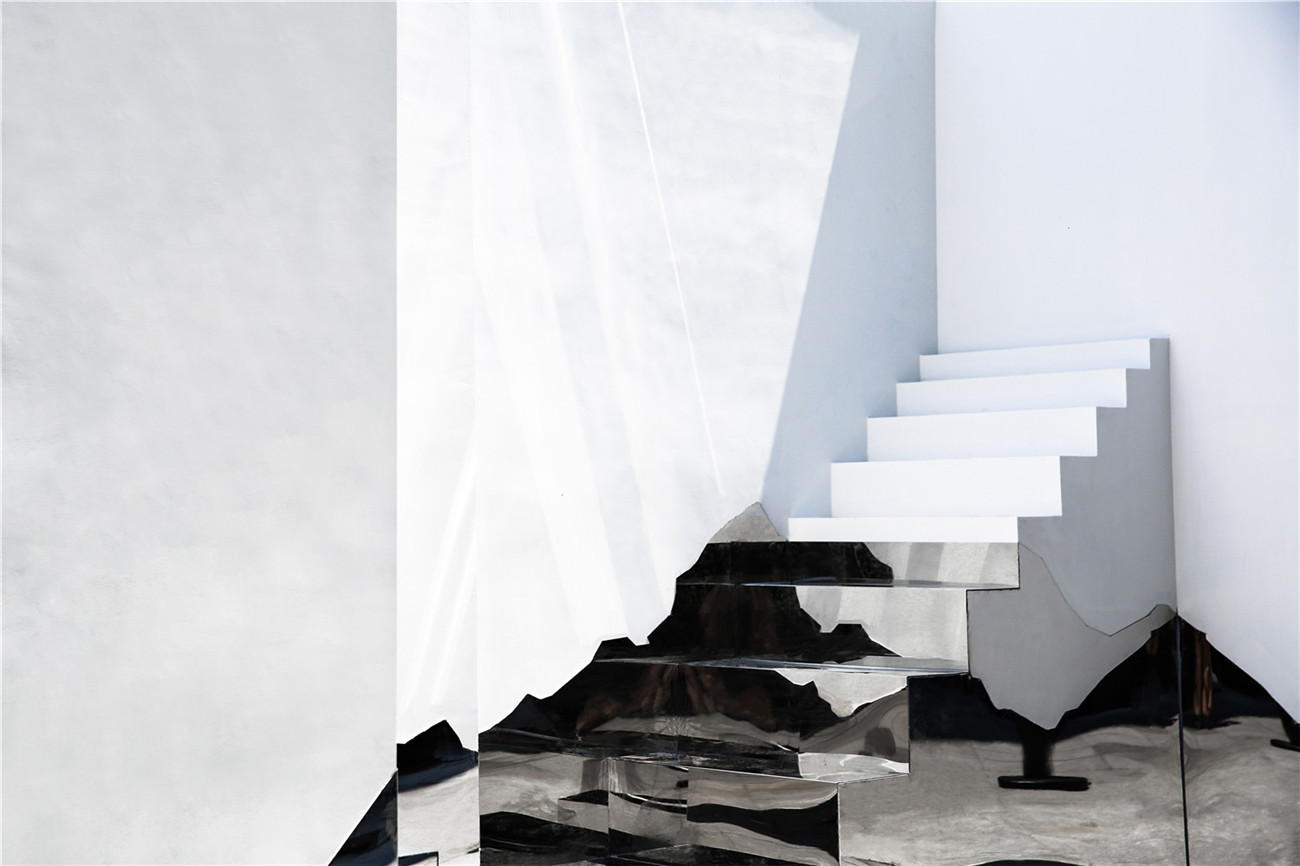
▲ 鏡面金屬中的世界 ?Nan Xueqian
人類(lèi)從未停止尋求遙不可及的烏托邦���,而曼陀羅之丘正是這樣的地方�。
Utopias are unreachable, but mankind has never ceased to look for them. The Mandalas Pop-up Digital Art Museum is such a place for you to discover.
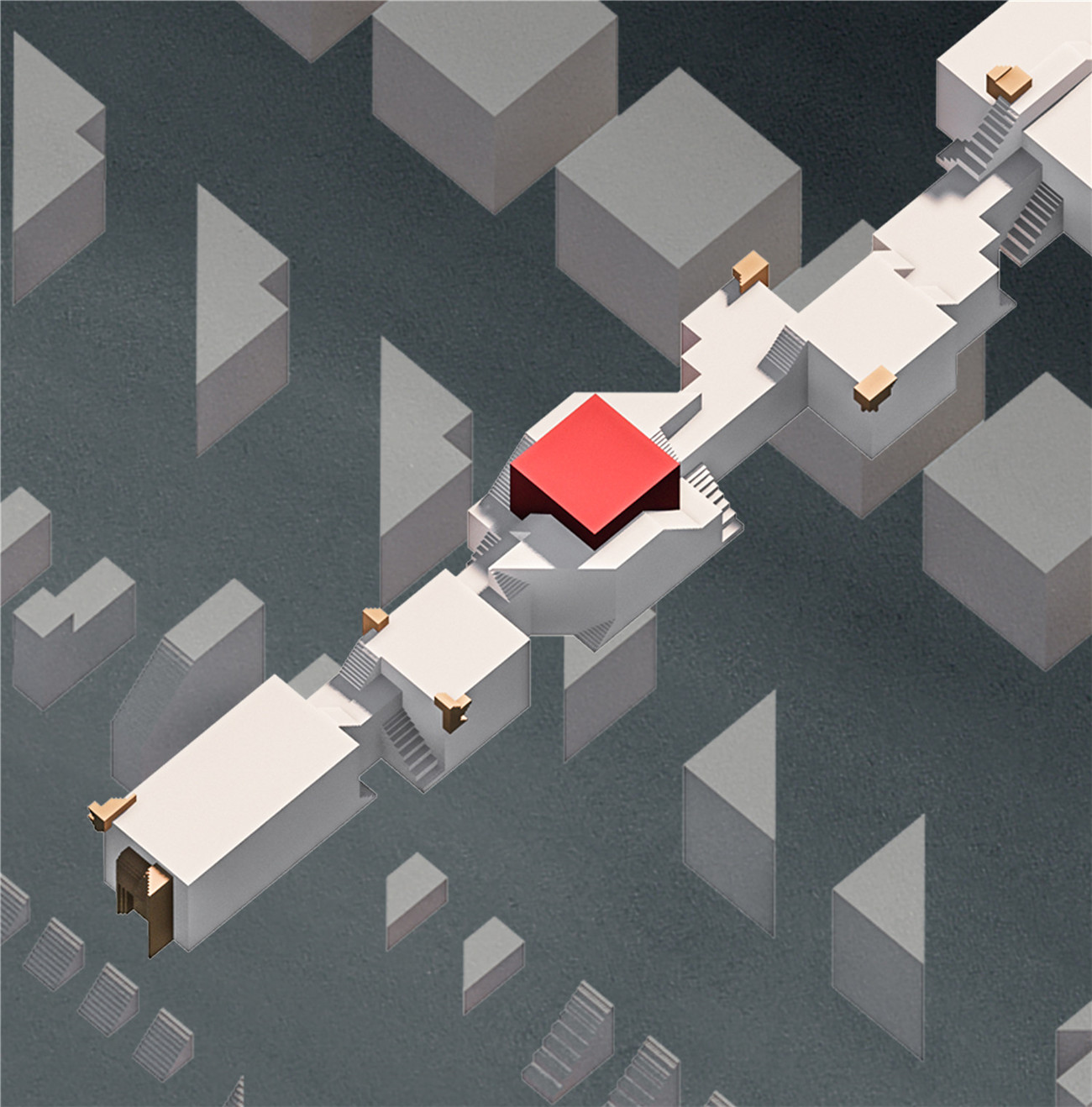
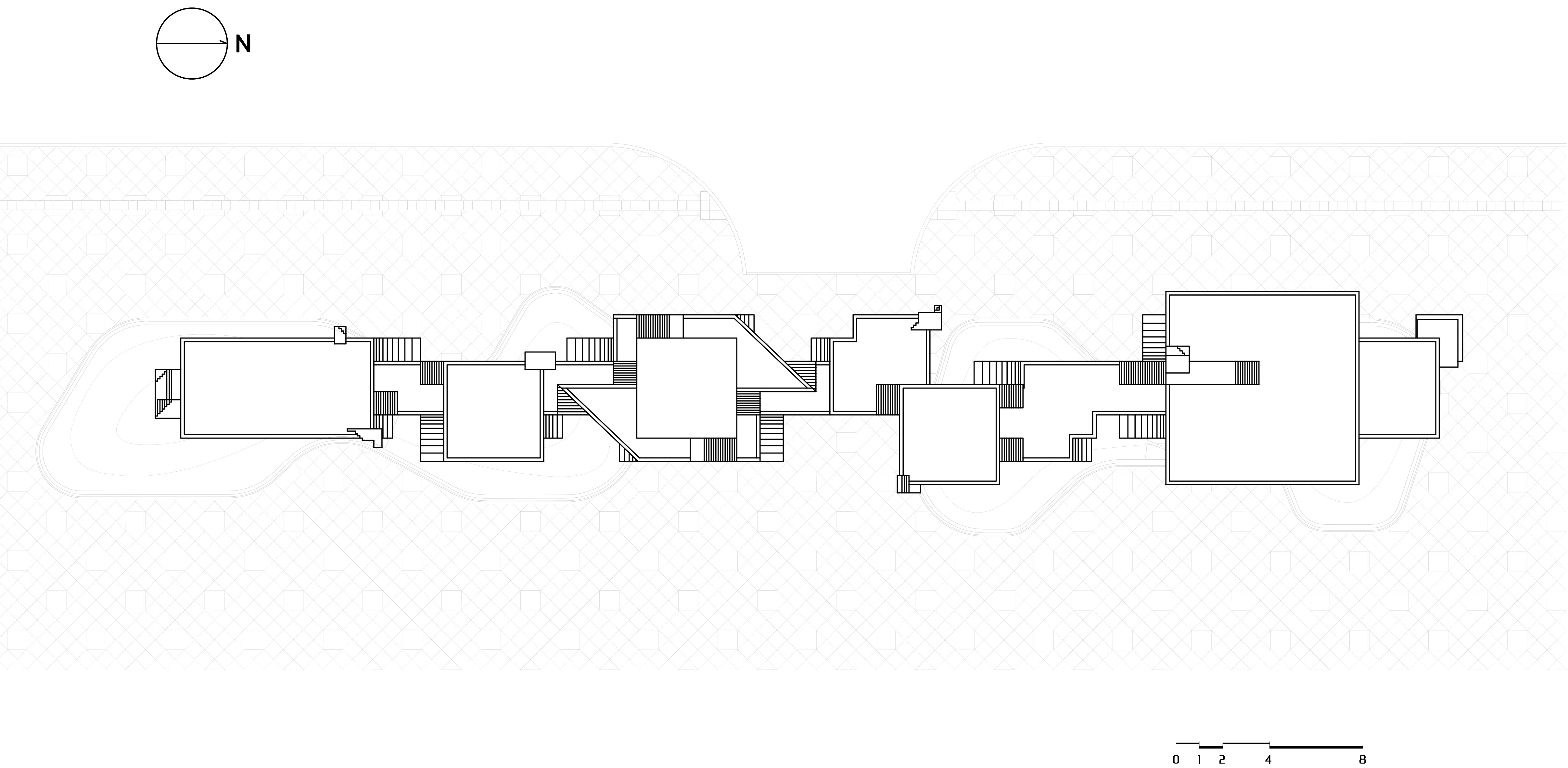
▲ 總平面圖 ?One Take Architects
項(xiàng)目名稱(chēng): 曼陀羅之丘 ? 數(shù)字藝術(shù)博物館
建筑事務(wù)所: 一本造建筑工作室
事務(wù)所網(wǎng)站: www.onetakearchitects.com
郵箱 : lihao169@gmail.com/info@onetakearchitects.com
主創(chuàng)建筑師: 李豪
策展/藝術(shù)團(tuán)隊(duì):iPOINT
項(xiàng)目詳細(xì)地址: 中國(guó)北京
項(xiàng)目完成年份: 2019
建筑面積(平方米): 240㎡
攝影師: 王石路(然石視覺(jué)),南雪倩(一本造建筑工作室), 顧晨楠(楠VISION)
Project name: Mandalas Pop-up Digital Art Museum
Architect’ Firm: One Take Architects
Website: www.onetakearchitects.com
Contact e-mail: lihao169@gmail.com
Lead Architects: Li Hao
Curator/Art Team: iPOINT
Project location: Beijing, China
Completion Year: 2019
Gross Built Area (square meters): 240㎡
Photo credits: Wang Shilu (Ranshi Vision), Nan Xueqian (One Take Architects)��,Gu Chennan ( Nan Vision)
Photographer’s website: -
版權(quán)聲明:本文由作者于景觀中國(guó)網(wǎng)發(fā)布�����,僅代表作者觀點(diǎn)����,不代表景觀中國(guó)網(wǎng)立場(chǎng)。如轉(zhuǎn)載�、鏈接、轉(zhuǎn)貼或以其它方式使用本稿����,需注明“文章來(lái)源:景觀中國(guó)網(wǎng)”。如有侵權(quán)����,請(qǐng)與發(fā)布者或我們聯(lián)系。
投稿郵箱:info@landscape.cn
項(xiàng)目咨詢(xún):18510568018(微信同號(hào))
 京公海網(wǎng)安備 110108000058號(hào)
京公海網(wǎng)安備 110108000058號(hào)



























